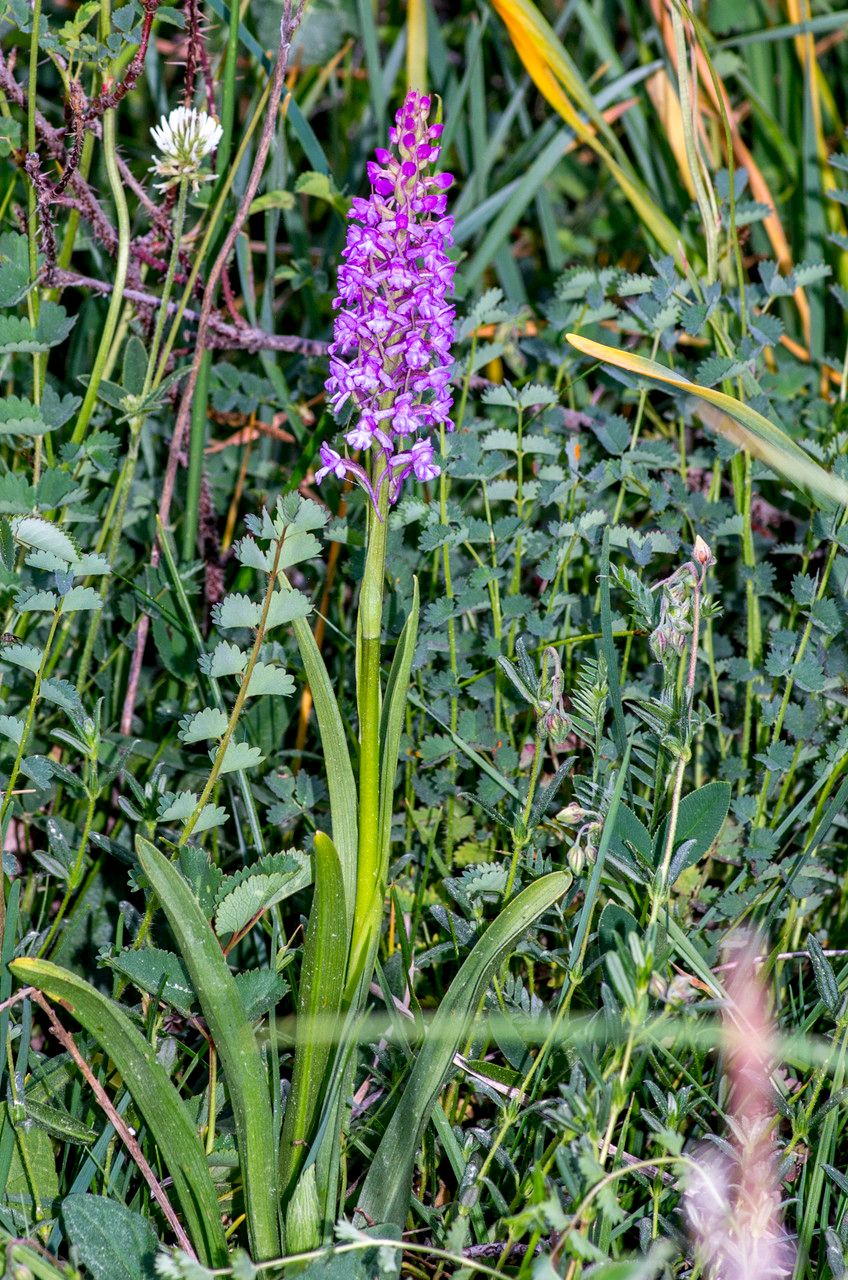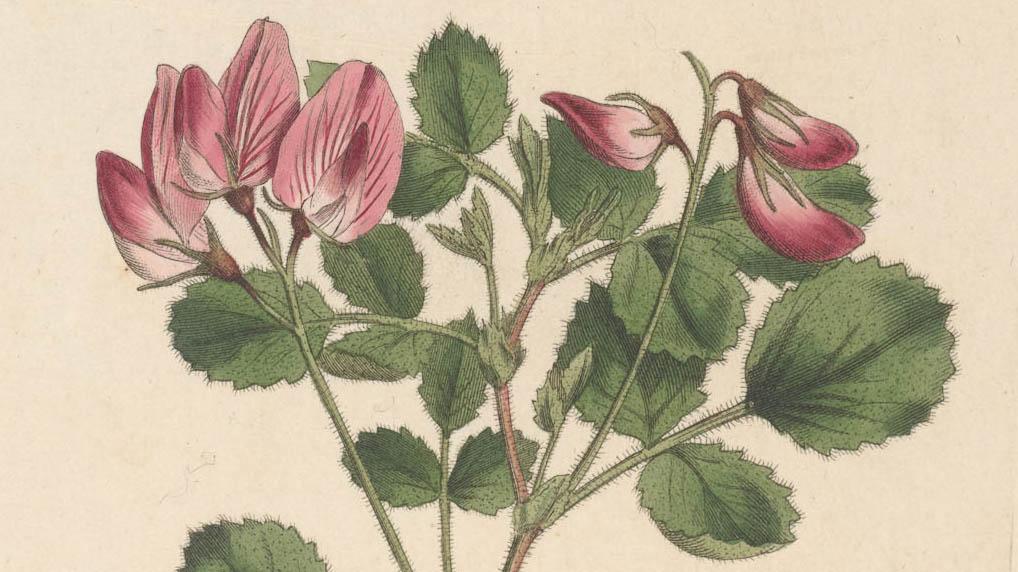Round-leaved Restharrow
ononis rotundifolia
Also known as: ["Round-leaved Ononis","Roundleaf Restharrow"]
Overview
A perennial herbaceous plant native to Europe, characterized by its rounded leaves and pinkish-white flowers.
Benefits & Perks
["wildlife attractant (bees, butterflies, birds)","drought tolerant","aesthetic foliage"]
Botanical Classification
| Phylum: | Magnoliophyta |
| Class: | Magnoliopsida |
| Order: | Fabales |
| Family: | Fabaceae |
| Genus: | Ononis |
| Botanical Name: | Ononis rotundifolia |
Plant Characteristics
Basic Information
- Category: Herbs & Weeds
- Suitable Location: rock gardens, slopes, or sunny borders in temperate regions
- Suitable For:
- Is Weed: No
- Allergenicity: low
Environmental Needs
- Climate: {"temperatureRange":"5–30°C"}
- Hardiness: {"zones":"6–9"}
- Misting: rarely required, only if grown in very dry indoor conditions
- Drainage: Fast-draining; avoid waterlogged conditions.
- Soil Type: Well-draining, loamy soil with some organic matter; tolerates poor soils.
Maintenance Level
- Maintenance Level: moderate
- Toughness Level: moderate
- Pruning Frequency: Annually in late winter or early spring; light pruning can be done after flowering.
- Pruning Intensity: Moderate; remove up to one-third of old growth to rejuvenate the plant.
Care Details
Ideal Sunlight Coverage:
Full sun to partial shade; 6–8 hours of direct sunlight per day, with some afternoon shade in hot climates.
Sunlight Tolerance Tips:
Acclimate plants gradually to intense sunlight; protect from harsh afternoon sun; adjust placement based on seasonal light changes.
Care Requirements
Care Difficulty
moderatemoderate
Sunlight
full sun to partial shade
Rotate plant for even light exposure; use sheer curtains to filter intense sun; monitor for sunburn.
Watering
every 7–10 days during active growth, reduce in winter
Water thoroughly but infrequently; ensure soil dries between waterings; avoid overwatering.
Soil
well-drained, sandy or loamy soil with moderate fertility
pH: Slightly acidic to neutral, pH 6.0–7.0.
Use raised beds for drainage; avoid heavy clay soils; mulch to retain moisture.
Temperature
Prefers moderate temperatures, 60–75°F (15–24°C); tolerates cooler conditions but not frost.
Avoid sudden temperature changes; protect from frost; provide shade in extreme heat.
Fertilizing
every 4–6 weeks during spring and summer, none in fall and winter
Fertilize sparingly; apply in spring before active growth; water after fertilizing to distribute nutrients.
Propagation
Methods
Stem cuttings or division; stem cuttings are more common for home growers.
Step-by-Step Propagation Guide
- Take 4–6 inch cuttings.
- Remove lower leaves.
- Dip in rooting hormone.
- Plant in medium.
- Keep moist and warm.
Best Time: Late spring to early summer when the plant is actively growing.
Environment
Warm, humid environment with indirect light; maintain consistent moisture.
Medium
Well-draining potting mix with perlite or sand; can also root in water initially.
Hormone
Rooting hormone is recommended to improve success rates.
Timeline
Roots may develop in 3–6 weeks; establish in new pot after 2–3 months.
Tools Needed
Pruning shears, rooting hormone, small pots, well-draining mix.
Quick Tips
Use healthy, non-flowering stems; keep cuttings out of direct sun; maintain humidity with a plastic cover.
Pruning & Repotting
Pruning Guide
Method
Selective thinning of branches; cut just above a leaf node or bud.
Pruning Plan
Prune to maintain shape, encourage bushier growth, and remove dead or diseased parts.
Tools
Pruning shears, sterilized scissors, gloves.
Checklist
Sterilize tools; prune dead/damaged growth; shape the plant; clean up debris.
Repotting Guide
Best Season
Early spring before new growth begins.
Pot Size
Increase pot size by 2–3 inches in diameter; ensure good drainage.
Method
Remove plant gently; trim roots if necessary; place in new pot with fresh soil; water lightly.
Suggestions
Repot every 2–3 years or when roots fill the container; beneficial for container-grown plants.
Checklist
Choose appropriate pot; prepare fresh soil mix; handle roots carefully; water after repotting.
Advanced Care Tips
Watering Mastery
Watering Checklist
Check soil moisture; water deeply; ensure drainage; adjust for season.
How to Apply Water Properly
Water at the base of the plant, ensuring moisture reaches the root zone; allow excess water to drain away; water in the morning to reduce evaporation.
Watering Schedule Tips
Water deeply once the top inch of soil feels dry; reduce frequency in winter to prevent root rot.
Soil Improvement
Add perlite or sand for drainage; incorporate compost for fertility; ensure good aeration.
Temperature Stress Management
Signs of Temperature Issues
Wilting, yellowing leaves, or stunted growth in extreme heat or cold; leaf drop in sudden temperature shifts.
Cold Stress
Stunted growth, leaf discoloration, and potential dieback in temperatures below 50°F (10°C); frost can damage or kill the plant.
Solution: Protect with frost cloth or mulch; move potted plants indoors; avoid planting in frost-prone areas.
Hot Stress
Wilting, leaf scorch, or reduced flowering in prolonged heat above 85°F (29°C); may go dormant to conserve energy.
Solution: Provide shade during peak heat; increase watering; use mulch to retain soil moisture.
Fertilizing Guide
Fertilizing Checklist
Choose balanced fertilizer; apply in spring; water after application; monitor for signs of over-fertilization.
Fertilizing Method
Use a balanced, slow-release fertilizer in early spring; avoid over-fertilizing, as Ononis rotundifolia is not heavy feeder.
Common Problems & Solutions
Toxicity Warning
Cats
Non-toxicOnonis rotundifolia is not considered toxic to cats. There are no known adverse effects from ingestion.
🌿 Toxic Parts:
⚡ Toxic If:
if eaten
Dogs
Non-toxicOnonis rotundifolia is not considered toxic to dogs. There are no known adverse effects from ingestion.
🌿 Toxic Parts:
⚡ Toxic If:
if eaten
Humans
Non-toxicOnonis rotundifolia is generally considered non-toxic to humans. There are no significant toxic effects or physiological impacts reported from ingestion.
🌿 Toxic Parts:
⚡ Toxic If:
if eaten
Frequently Asked Questions
Q: Is Ononis rotundifolia toxic to pets?
A: There is insufficient data to determine toxicity to pets.
Q: How does Ononis rotundifolia grow?
A: It is a perennial herb that thrives in well-drained soils and full sun to partial shade.
Q: Does Ononis rotundifolia attract wildlife?
A: Yes, it attracts bees, butterflies, and birds due to its nectar-rich flowers.
Quick Reference
| Family: | Fabaceae |
| Care: | moderate |
| Light: | full sun to partial shade |
| Water: | every 7–10 days during activ |
Get Expert Care Tips
Download the Plantious app for personalized care reminders and plant identification!
Google Play App Store







